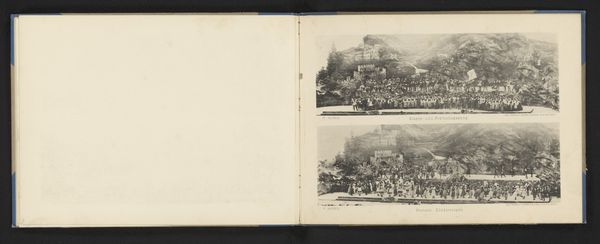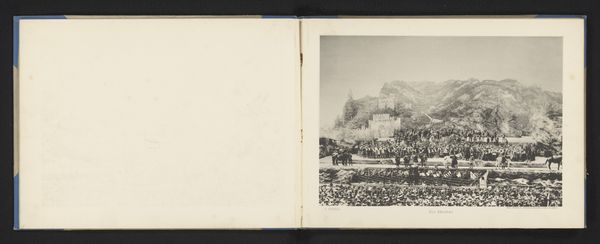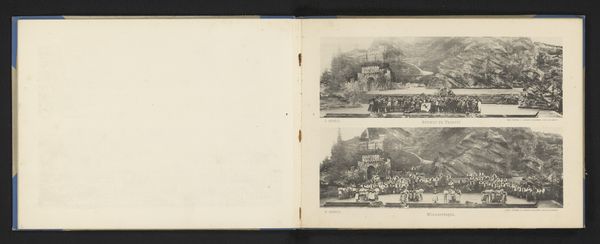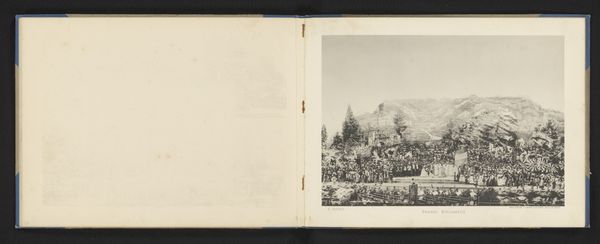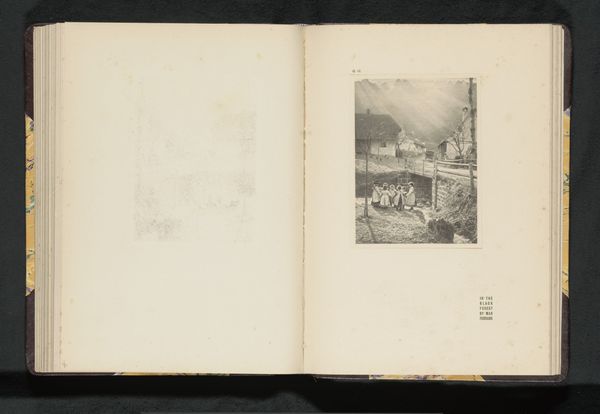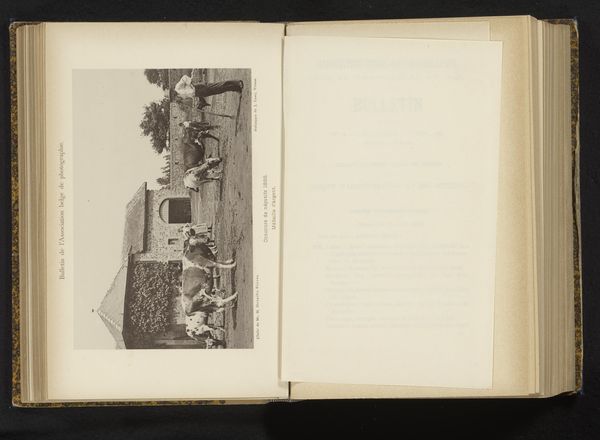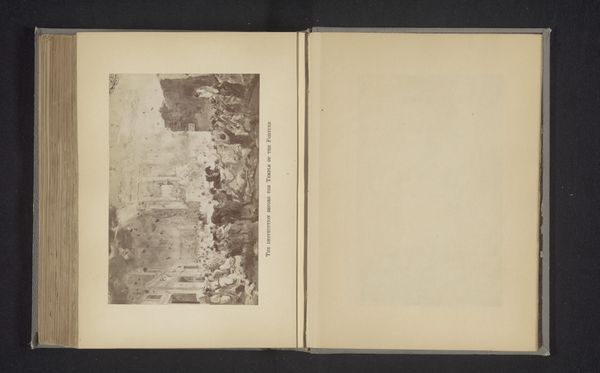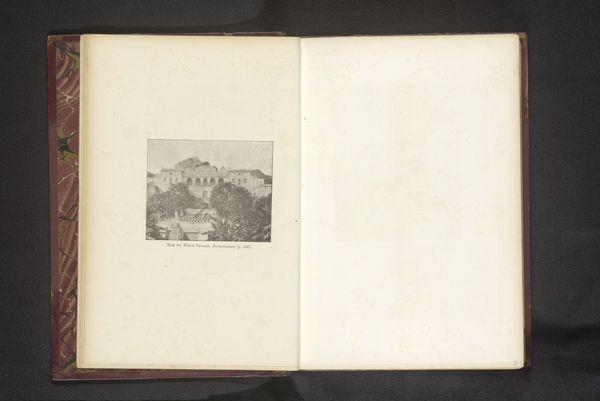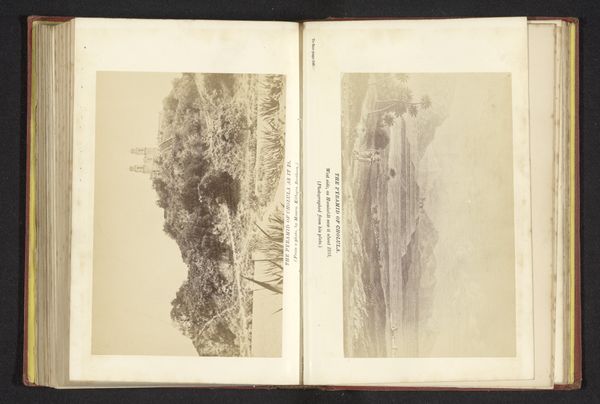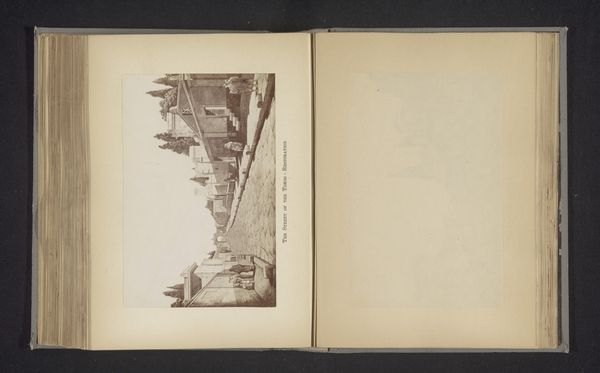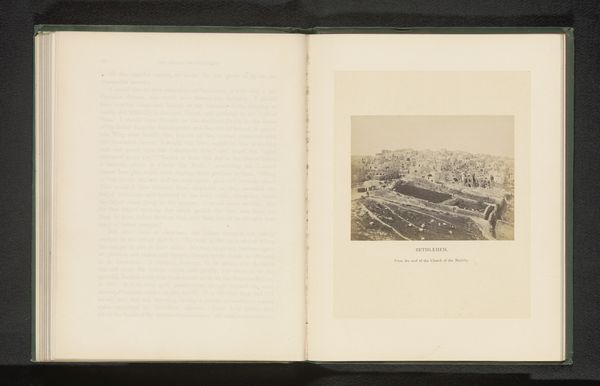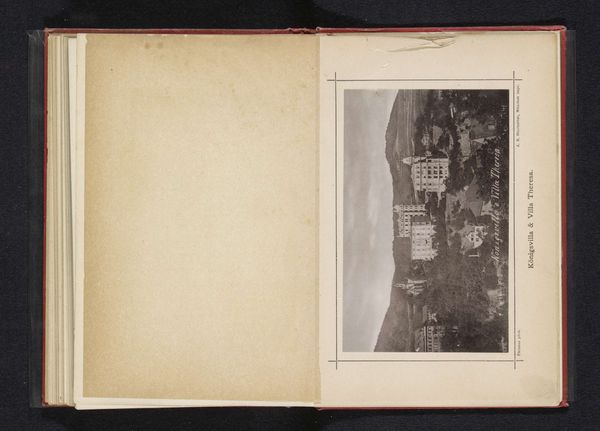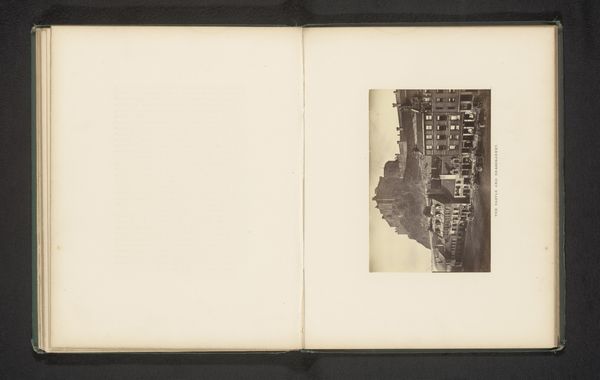
Gezicht op de dood van Benedikt Fontana tijdens de Calven-Feier te Chur before 1899
0:00
0:00
# print
#
landscape
#
mountain
#
history-painting
Dimensions: height 180 mm, width 254 mm
Copyright: Rijks Museum: Open Domain
Curator: This compelling print, rendered before 1899 by Lienhard & Salzborn, depicts the "View of the Death of Benedikt Fontana during the Calven Celebration in Chur." It's a dramatic, historical scene, meticulously captured. What impressions does it stir for you? Editor: Whoa, okay, instantly I feel like I'm watching a grand play, but in sepia-toned remembrance. There's a stark contrast between the smallness of the figures and the towering mountain – making us tiny in comparison to historical dramas. I can almost hear the mournful music accompanying this event. Curator: Yes, that sense of scale is essential. Mountains often function symbolically as timeless witnesses to human affairs. Benedikt Fontana, a Swiss military leader, is depicted here in his final moments. The Calven celebration, of course, commemorates Swiss resistance and bravery. Mountains themselves are deeply coded culturally with those values. Editor: Absolutely! I imagine every ridge and peak carries stories for those people. What strikes me is the somewhat detached perspective. It's like we're viewing history from a safe distance, reflecting on past sacrifices. Like watching history happen but safely detached from the real pain. Curator: Exactly. Printmaking allowed for the wide dissemination of such imagery, thus cementing the historical narrative and the moral lessons within it. Fontana’s death becomes a symbol of patriotism, courage, even martyrdom. That dramatic composition supports that goal by drawing our eye towards the main figures and their action against the backdrop of unforgiving landscape. Editor: It's fascinating how landscape then can become not just setting, but co-conspirator in shaping narratives. Like this isn't just about what happened that day, but how they saw themselves as the people in relationship to this land. Do you think an artist can completely shake off that inherited symbolic baggage in representing place? Curator: It's difficult, if not impossible, to entirely divorce oneself from cultural memory when depicting something so culturally potent. An artist could certainly subvert it, critique it, play with it. But the pre-existing symbolic weight is always there as the point of departure or a foil. The power of history is almost physically present in this print. Editor: Yes, powerful! It stays with you. I won't see mountains in the same way tomorrow. Curator: A testament to art's enduring influence. I leave contemplating the legacy and symbolic life it carries within its depiction.
Comments
No comments
Be the first to comment and join the conversation on the ultimate creative platform.
